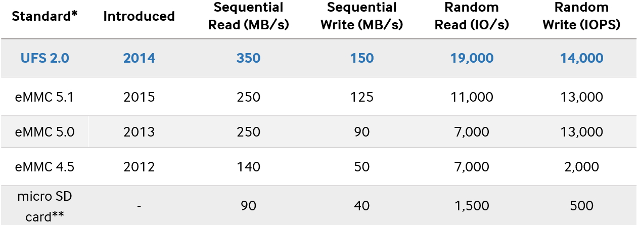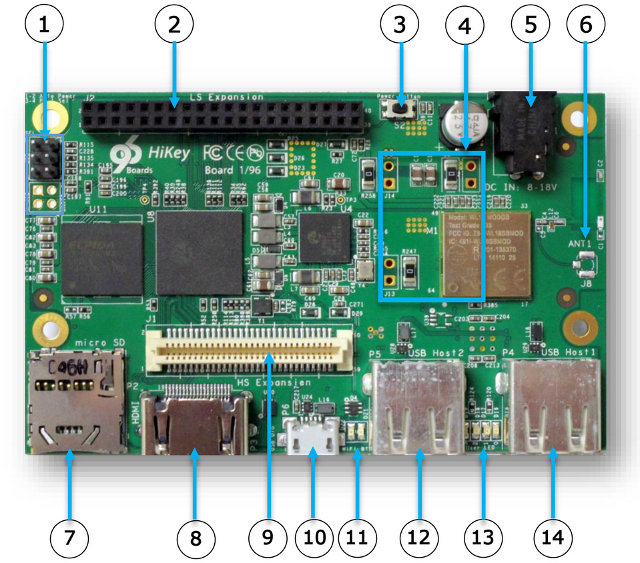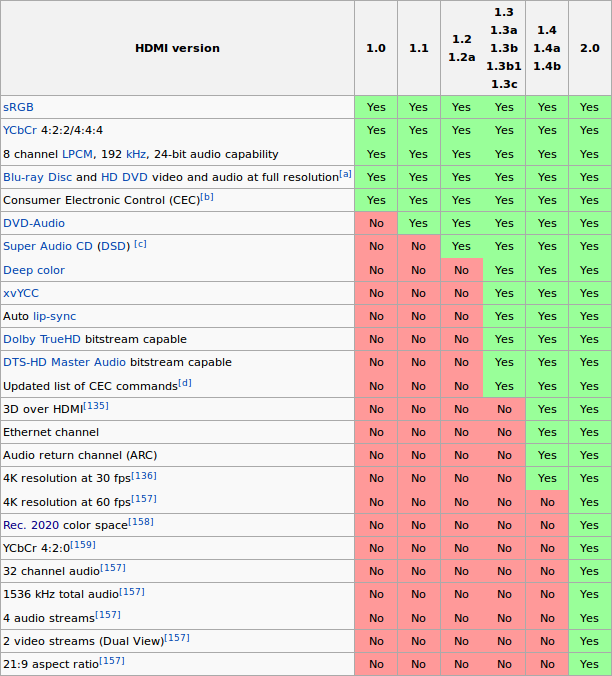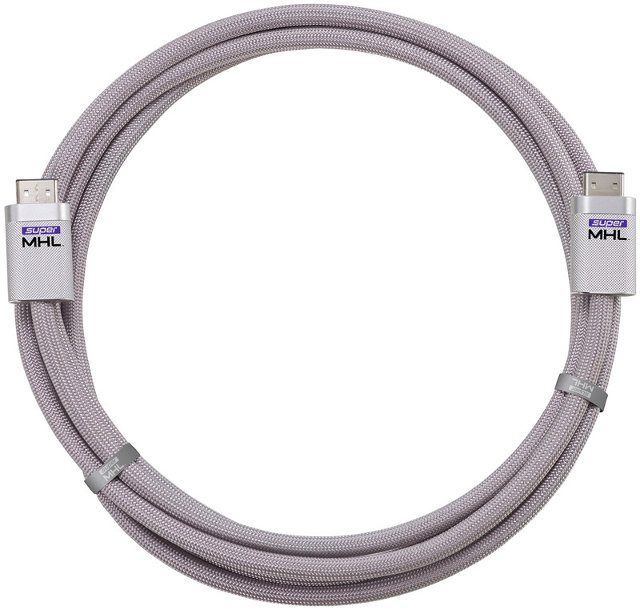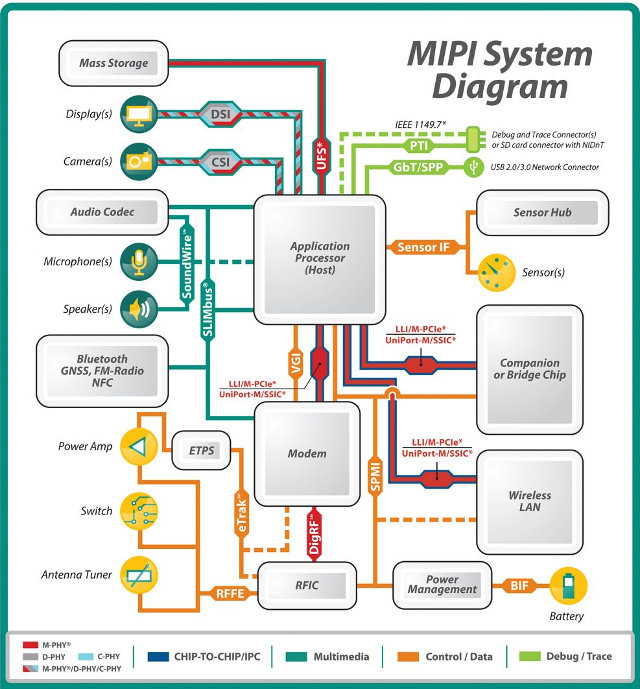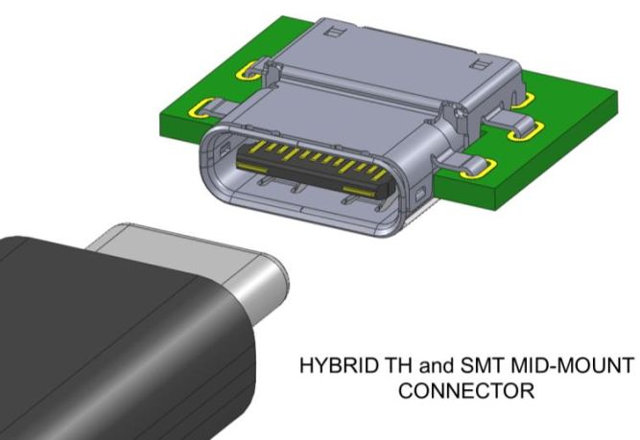eMMC (embedded multimedia card) provides a boost in read and write performance compared to traditional NAND flash memories, let alone micro SD cards. Samsung has now announced the manufacturing of the first 32, 64, and 128GB embedded memory solution based on Universal Flash Storage (UFS) 2.0 standard delivering up to 350MB/s read speed and 150MB/s write speed, or 40% improvement in read speed over eMMC 5.1.This should help further reduce boot time, and app loading times. Moreover, while eMMC read and write operating are sequential (half-duplex), UFS 2.0 allows for full-duplex operating, meaning writing and reading can happen at the same time. UFS can achieve this feat thanks to a LVDS (Low-Voltage Differential Signaling) serial interface with dedicated read/write paths contrary to the parallel 8-bit interface used for eMMC. Combined with a Command Queue(CQ), which sorts out the commands that needs to be carried out, UFS 2.0 allows three times […]
$129 Hikey Board Features a 64-bit ARM HiSilicon Processor, Complies with Linaro’s 96Boards Specifications
In my post about the Embedded Linux Conference 2015, I noticed a talk entitled “Generalizing Android for Low-Cost 64-Bit ARM-Based Community Boards” to be presented by Khasim Syed Mohammed, Linaro, mentioning that “Linaro is developing an open hardware platform specification to encourage software development on low-cost boards to lower the cost and accelerate the availability of maker and embedded products based on ARM SoCs”. But at the time, I had no details about the specifications themselves. As Linaro Connect HK 2015 is now taking place, the 96Boards Consumer Edition specifications have been released, and Hikey board have been unveiled with HiSilicon Kirin 620 octa core Cortex A53 processor, 1 GB RAM, and 4GB eMMC. Hikey board specifications: SoC – HiSilicon Kirin 620 octa core Cortex A53 processor @ 1.2 GHz (10,000 Dhrystone VAX MIPS) with ARM Mali-450MP4 GPU System Memory – 1GB LPDDR3 @ 800 MHz Storage – 4GB eMMC […]
Embedded Linux Conference 2015 Schedule – IoT, Cars, and Drones
Embedded Linux Conference 2015 will take place in San Jose, California, on March 23 – 25, 2015, and will focus on Drones, Things and Automobiles. The schedule has been published, and whether you’ll attend or not, it’s always interested to have a look at what will be talked about to have a peak into the future of Embedded Linux, or simply keep abreast with the progress in the field. So as usual, I’ve gone through the schedule, and made my own virtual program with talks that I find interesting. Monday 23rd 9:00 – 9:30 – Driving standards and Open Source to Grow the Internet of Things by Mark Skarpness, Director of Systems Engineering at Intel Billions of devices are beginning to come online, and many of these devices, large and small, are running open source software. To fuel this innovation, it’s more important than ever for these devices to use […]
All HDMI 2.0 Implementations Are not Equal
One of the key changes between HDMI 1.4 and HDMI 2.0 is support for up to 4K @ 60Hz instead of just 4K @ 30Hz, and at first, I thought an HDMI 2.0 capable device would be compatible with HDMI 2.0 TV, and it did not need to look into details. I was wrong. There’s a nice table in Wikipedia that explains the main differences between HDMI 1.4 and HDMI 2.0 and older versions. Other features include YCbCr 4:2:0 (That’s the important bit), Rec. 2020 color space, 32 channel audio, 21:9 aspect ratio, and more. By the way, there’s no such thing as an HDMI 2.0 cable (Source: straight from the horse’s mouth), so if you have a cable that support 4K30, it will work with 4K60 as well. Does HDMI 2.0 require new cables? No, HDMI 2.0 features will work with existing HDMI cables. Higher bandwidth features, such as […]
superMHL Standard Support 8K Video Output, 48-bit Color Depth, Dolby Atmos, and More
As we all just so happen to play with our 4K television… NOT, the MHL Consortium is already preparing for the future with a new superMHL specifications supporting 8K video up to 120 fps, the ability to charge more powerful devices, new audio format support and more. Key features of superMHL specifications: Delivery of up to 8K 120fps video (4320p @ 120 Hz) Deep Color support up to 48-bit color depths Wider color gamut to view content the way filmmakers intended High-Dynamic Range (HDR) support to strike the perfect balance of bright spectral highlights along with shadow details Immersive surround sound with support for object audio such as Dolby Atmos, DTS-UHD, 3D audio, and an audio-only mode Advanced connectivity configurations to link multiple MHL devices together (TV, AVR, Blu-ray player) and control them via one remote Power charging up to 40W Content on multiple displays when connecting a single device […]
SGET Releases embedded NUC Standard Version 1.0 for Embedded Boards
SGET (Standardization Group for Embedded Technologies) had previously released system-on-module standards such as Qseven and SMARC. The group has now published the new “embedded NUC” (eNUC) standard around NUC (Next Unit of Computing) developed by Intel, that defines mechanical and basic technical parameters for multifunctional, small sized and cost effective embedded computer boards. The standard specifies both required and optional features. Minimal requirements are summarized as follows: PCB outline & PCB mounting concept – 10.16 x 10.16 cm (4 x 4 “) board. Other dimensions as shown above. PCB and connectors height are also defined, respectively with 18.6 mm and 24.25 mm maximum heights. Predefined Board Types with minimum interface and feature set: Type 1 (Basic) – At least 1x LAN, 2x USB. and an external single power connector. Recommended features include video out (HDMI, DP,…), 1x SATA, 1xSD slot, audio interfaces, mini PCIe, etc… Type 2 (Connectivity) – At […]
MIPI Introduces SoundWire Audio Interface for Mobile Devices
MIPI (Mobile Industry Processor Interface) Alliance is a non-profit corporation that establishes standards for hardware and software interfaces in mobile devices. MIPI is better known for its MIPI DSI (Display Serial Interface) and CSI (Camera Serial Interface), but as you can see from the diagram below, they’ve been busy publishing a lot more interface specifications. The latest being MIPI SoundWire, a new audio interface for amplifiers, microphones and audio codecs used in smartphones, tablets, mobile PCs and other devices. The consortium only released a “MIPI SoundWire Specification Brief” so there aren’t that many details. SoundWire is not the first audio interface from MIPI, with SLIMbus having been first introduced in 2007, and later updated in 2013 with SLIMBus 1.1. SLIMbus must not have been that widely used, as only Intrinsyc OPEN-Q 8084 Development Kit appears to feature the interface among all the board listed on CNX Software. Nevertheless SLIMBus and […]
USB Type-C Reversible Connectors Specifications Published
We now have all sorts of USB receptacles and connectors, but this is supposed to eventually change thanks to type-C connectors, which are small and robust enough to be used in laptop, computer, smartphones, and other type of devices, and will replace the USB type A, micro and mini USB ports. Type-C connectors will also be reversible, so there won’t be a way to insert the cable upside down. The USB 3.0 Promoter Group has just announced the completion of the USB Type-C specification, and transferred it to the USB Implementers Forum (USB-IF) for ongoing management and the establishment of a compliance and certification program. Key features of Type C specifications include: Entirely new design Tailored for emerging product designs Robust enough for laptops and tablets; slim enough for mobile phones Similar to size of USB 2.0 Micro-B Usability enhancements – Reversible plug orientation and cable direction Supports scalable power charging […]


